Planning
Gas vs. Wood Fire Features
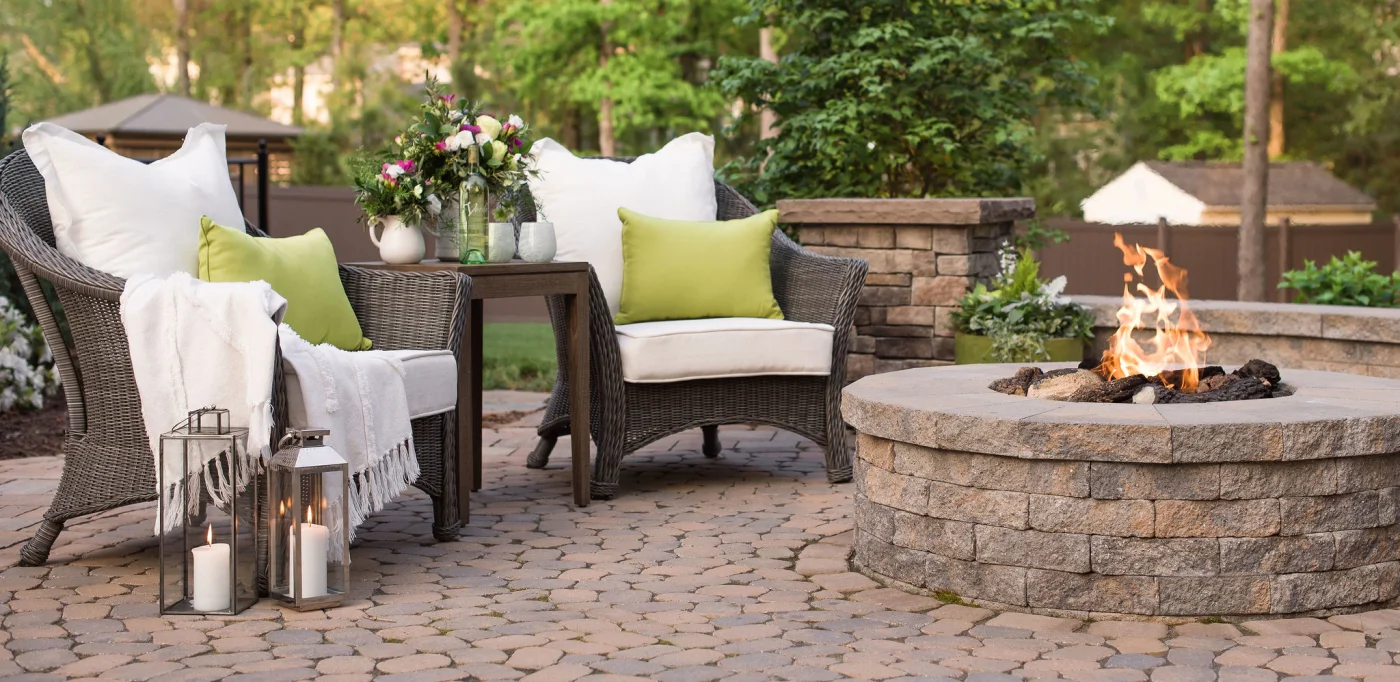
Story Highlights
When planning Outdoor Living Spaces, one of the most difficult decisions for clients is choosing between a gas or wood-burning fire feature. Though very similar in many ways, gas and wood-burning fire features are also very different. Each has its distinct advantages as well as its own disadvantages. In this article, we compare the two styles using 8 defining characteristics, including convenience, warmth, smoke, and cost. Continue reading to see which style comes out on top!
round 1
Convenience
In today's busy world, convenience is important to many homeowners. The easier it is to use, the more the feature will be enjoyed.
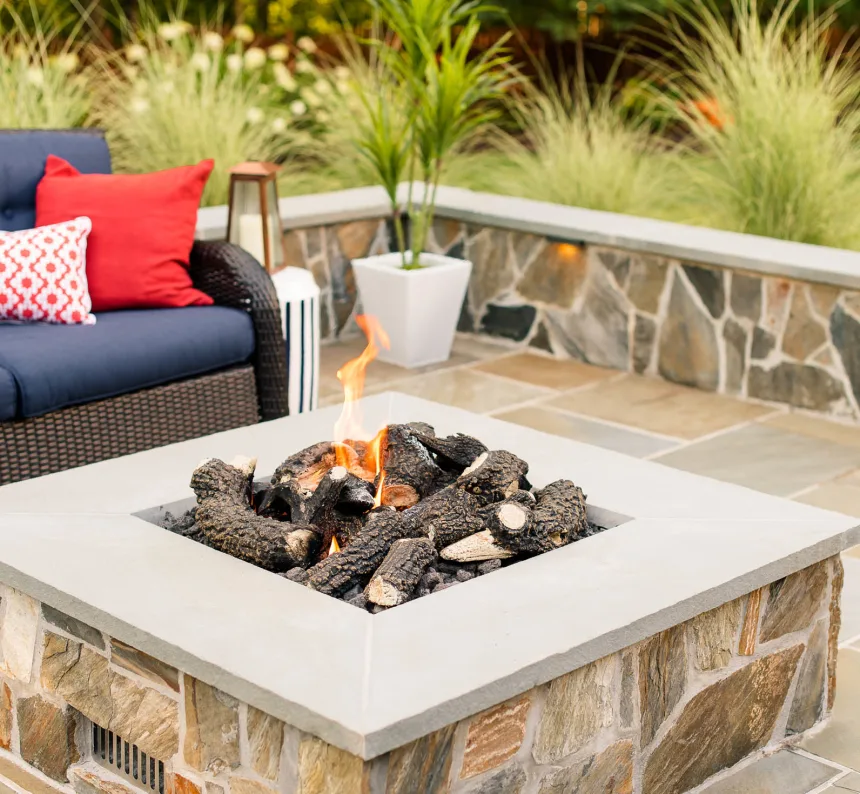
Convenience
Winner: Gas
When it comes to convenience, gas fire features win with ease.
No buying wood. No chopping wood. No stacking wood. No seasoning wood. No burning wood. No wood ashes to clean.
With a gas feature, you can go from zero to fire in less than ten seconds. With such convenience, gas features are perfect for both a planned evening with friends or an impromptu nightcap.
round 2
Warmth
One of the main reasons to include a fire feature is to extend the use of your outdoor living space. The warmth provided by a fire feature allows you to comfortably enjoy the cooler nights of Autumn and Winter.
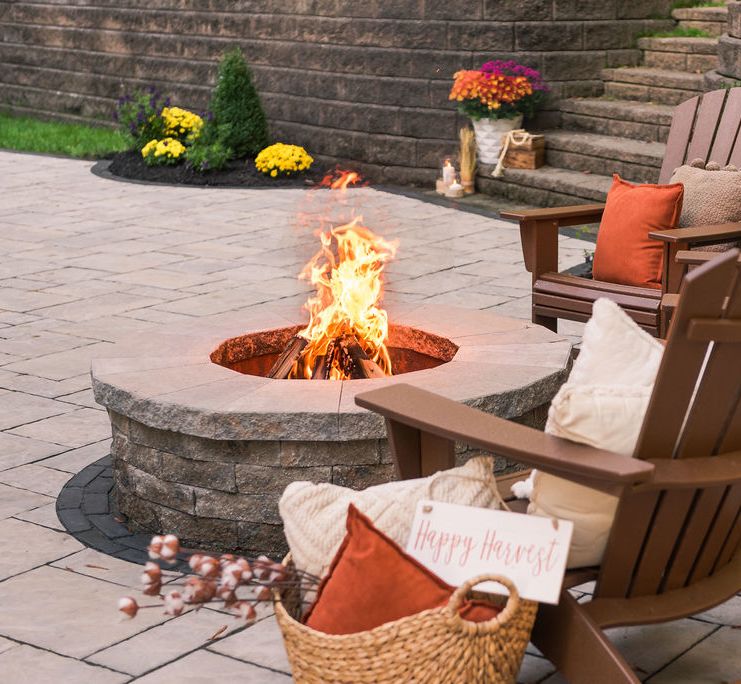
Warmth
Winner: Wood
In general, wood-burning fire features provide greater heat than gas features. Though some gas burners generate an equivalent amount of BTUs, many localities regulate their use. If warmth is a driving factor in your decision-making, a wood-burn fire feature is definitely the best choice.
Round 3
Ambiance
When planning an Outdoor Living Space, your goal should be to create an environment that is comfortable and relaxing. Whether it's a water feature, landscaping, lighting, or fire feature, most elements have an effect on the ambiance of the space.
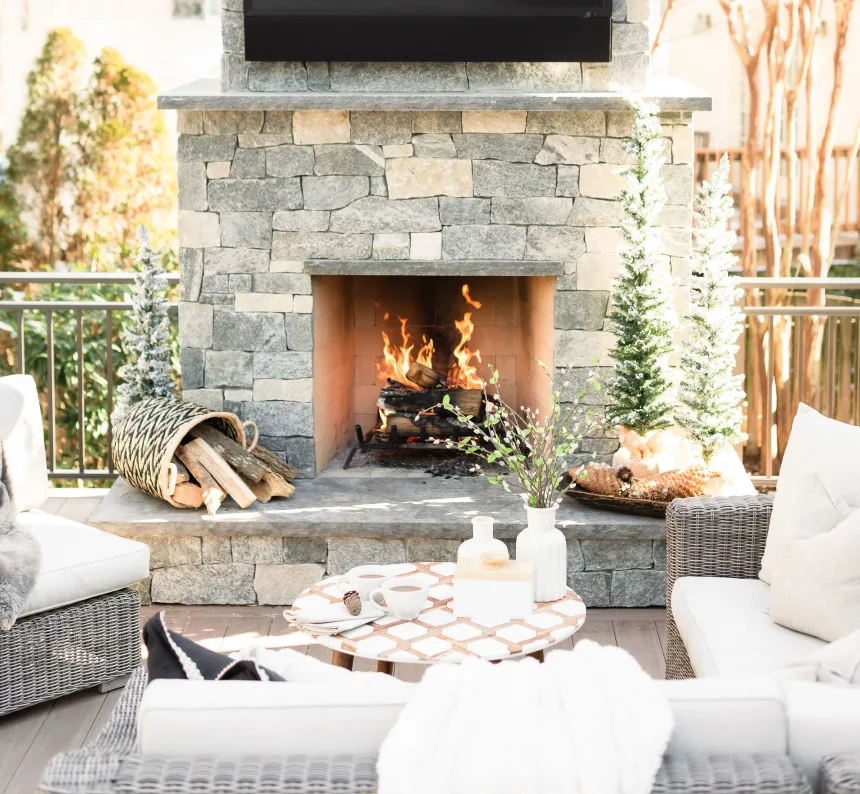
Ambiance
Winner: Wood
The scent and sound of a crackling, wood fire creates an enchanting ambiance that is unmatched by any gas feature. Additionally, the rich, warming glow of a wood-burning fire creates a greater sense of comfort than gas flames which tend to be more sterile.
Round 4
The S'mores Factor
As one of the most popular fire feature activities, making S'mores must be considered in this debate.
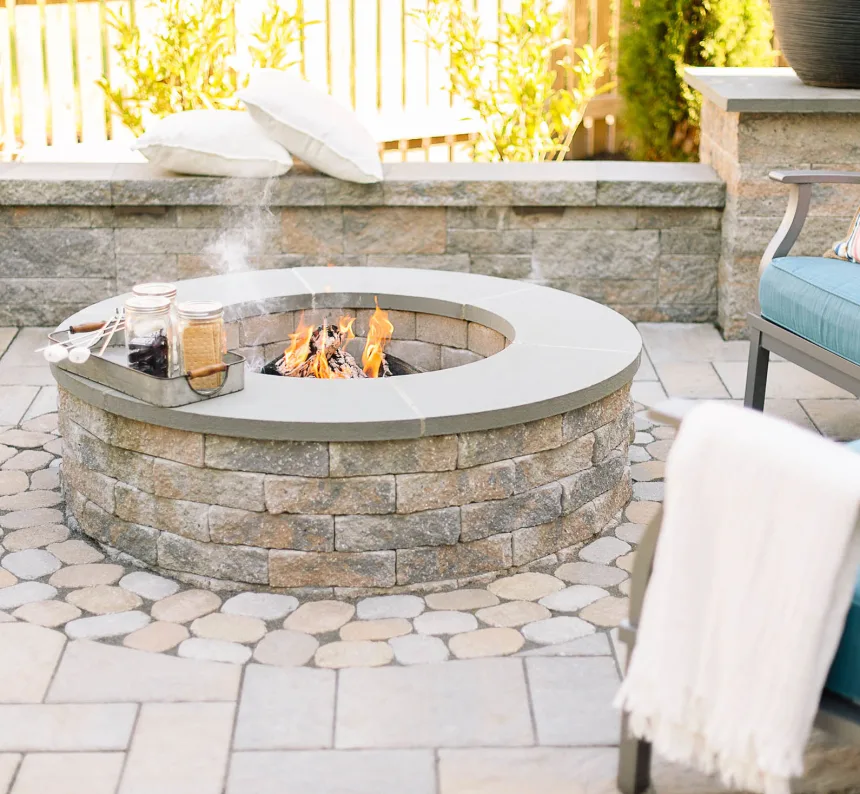
The s'mores factor
Winner: Wood
When it comes to S'mores, the clear winner is wood-burning features. Though any flame can toast a marshmallow, the end result tastes better when using a wood fire. Additionally, if a marshmallow melts and falls into a wood fire, it just burns away without concern. If a melting marshmallow falls into a gas fire, the cleanup can be arduous and the decorative finishes (gas logs, lava rocks, and fire glass) can be ruined.
Round 5
Placement
One factor that is rarely discussed during the gas vs. wood debate is the placement of the fire feature. Though interchangeable in many designs, there is actually a big difference in how/where wood and gas features can be used.
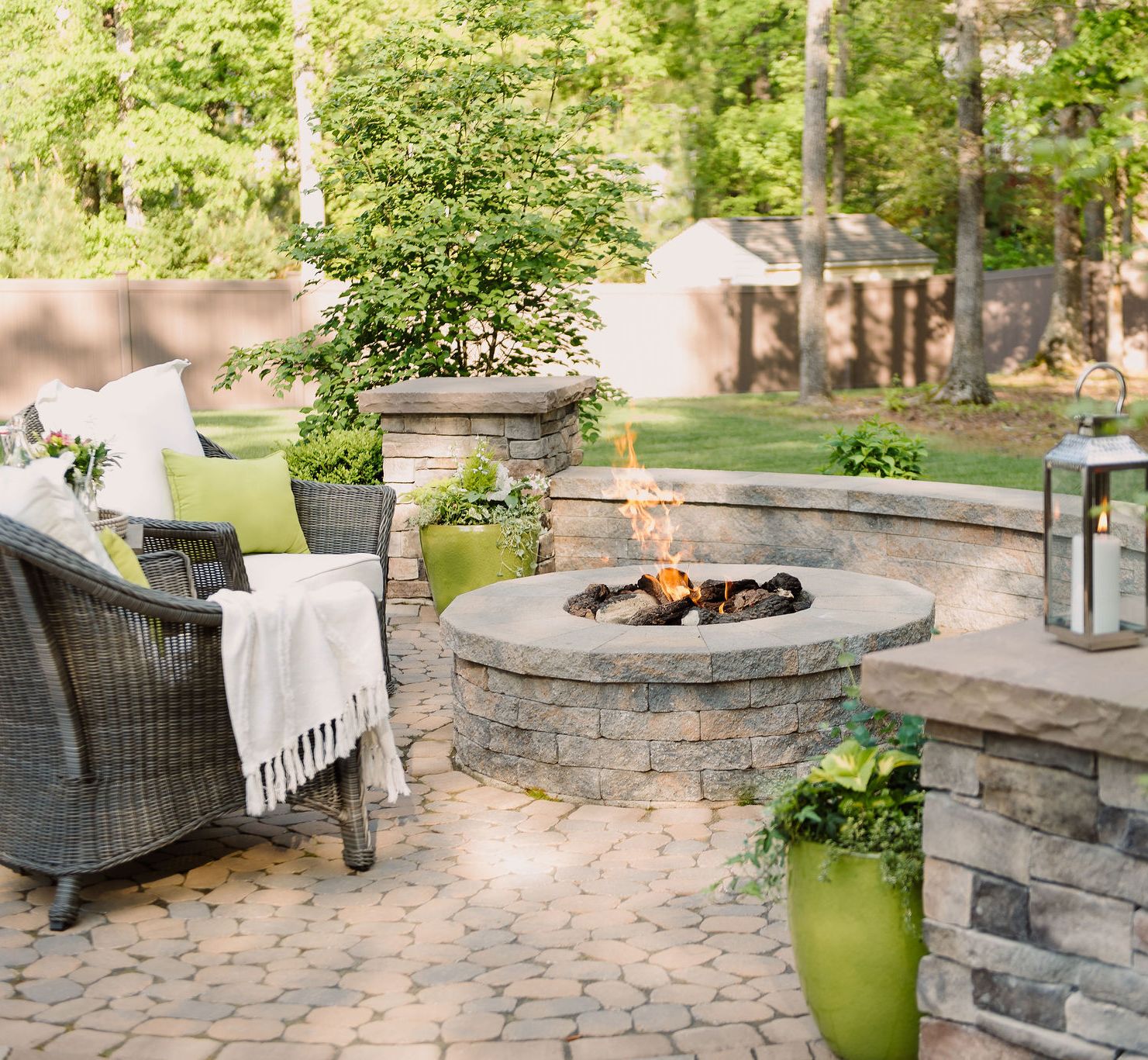
Placement
Winner: Gas
Because they are a controlled burn, without floating ashes and embers, gas fire features are far more versatile than their wood-burning counterparts. Depending on the locality, there are various building and fire codes that require wood-burning features to be a certain distance from structures and/or have a specific height of chimney. Gas features can be placed closer to the home, incorporated into other features (tables, fountains, and outdoor kitchens), and located underneath structures like pergolas and pavilions.
round 6
Smoke
When discussing fire features with clients, smoke is one of the most frequently mentioned concerns.
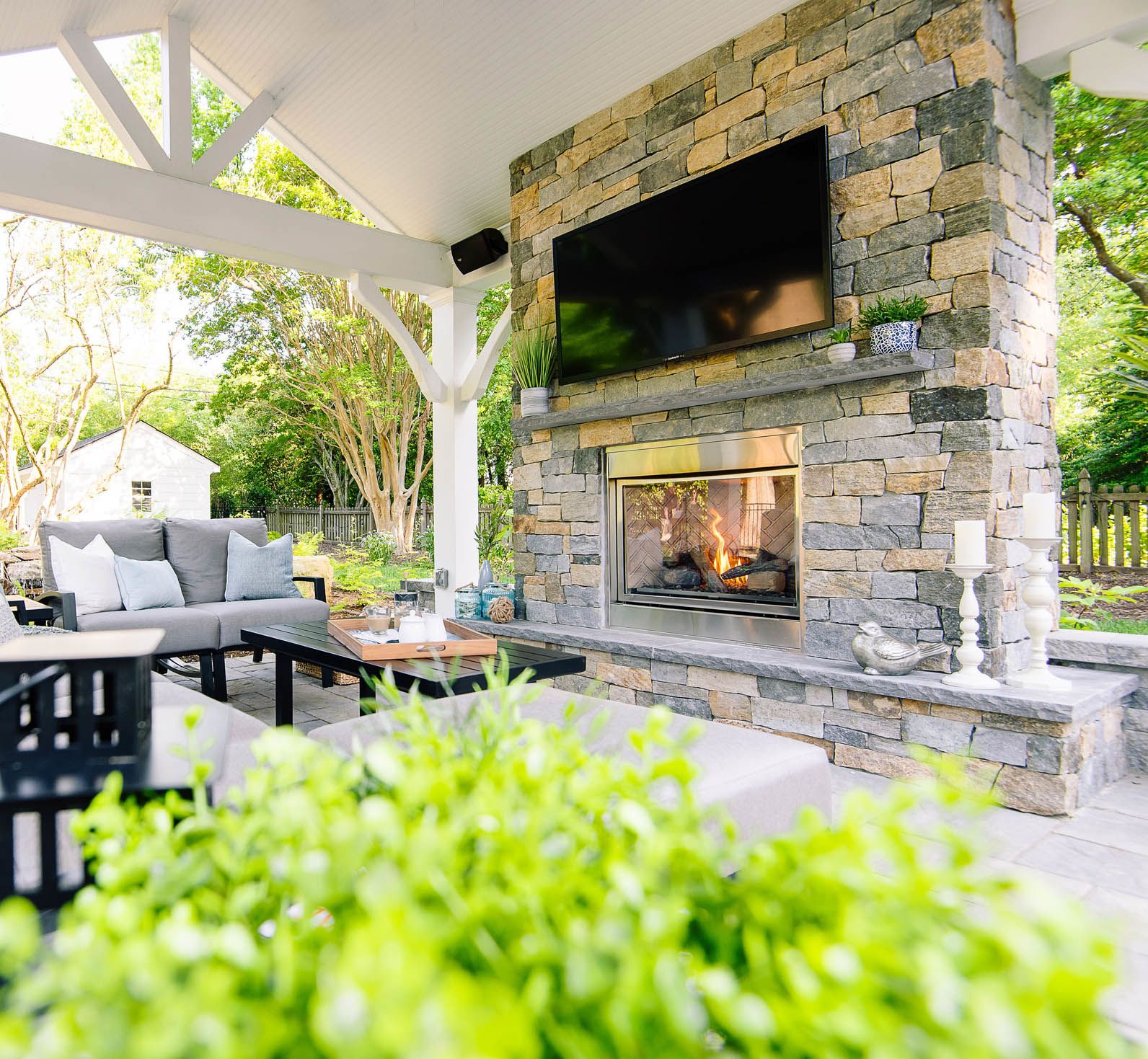
Smoke
Winner: Gas
When using a wood-burning fire feature, no matter how much you move to avoid it, the smoke often seems to follows you. Also, as lovely as the wood-burning experience can be, the smell of smoke sticking to you for days leaves much to be desired.
When smoke is a concern, there is absolutely no debate; Gas is the clear winner. The clean-burning fuel makes for an enjoyable, smoke-free experience.
round 7
Maintenance
In general, all fire features are low in maintenance. Whether gas or wood-burning, these features can be enjoyed without much regular attention.
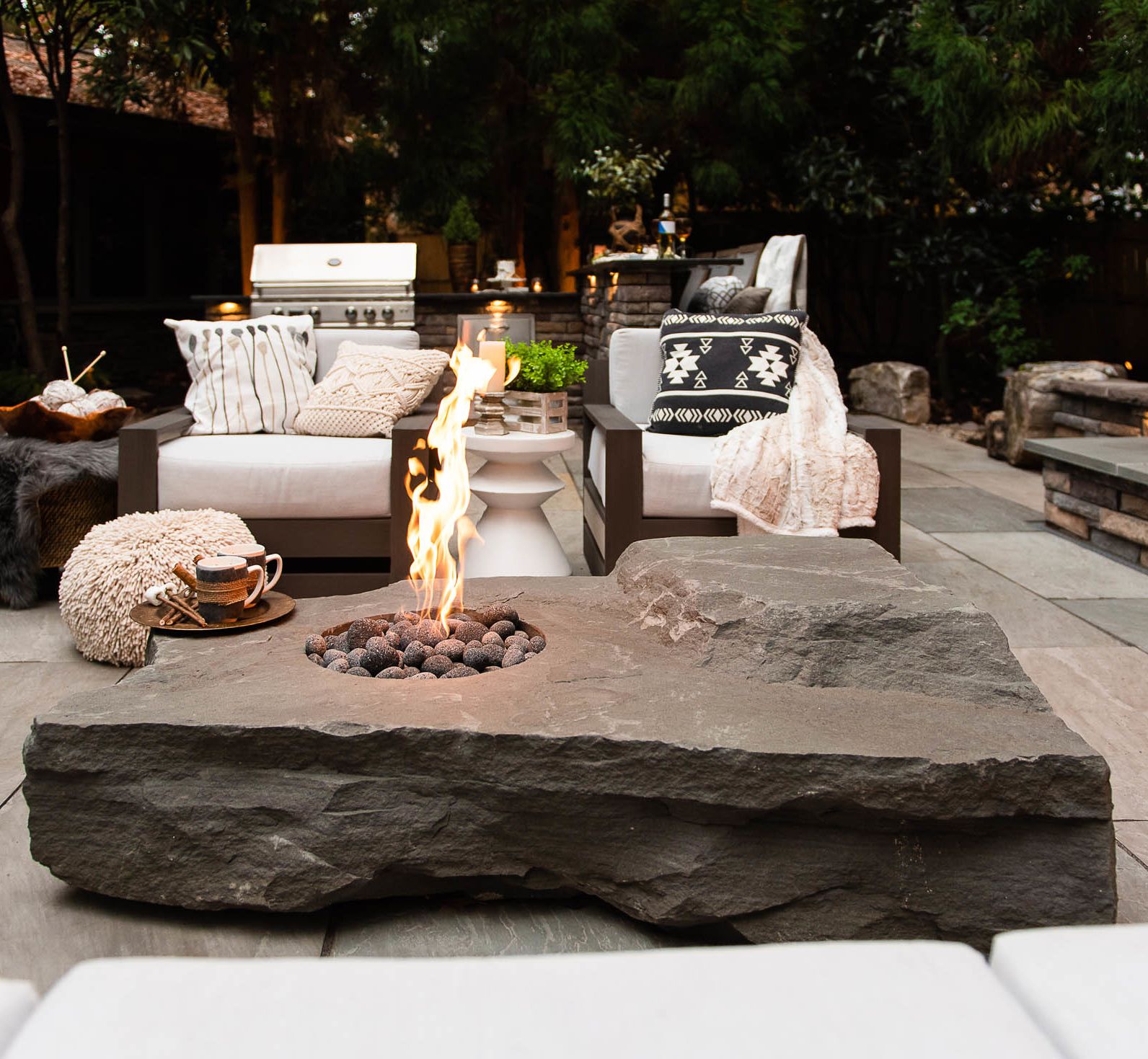
maintenance
Winner: Gas
Though both are low in maintenance, gas features require slightly less attention. When it comes to wood-burning features, you must clean up and remove old ashes before starting a new fire. Failure to do so will limit oxygen flow, resulting in difficulty starting and maintaining a strong fire. Though not an overwhelming task, it is more work than gas features require.
round 8
Cost
Though we all wish it wasn't, cost is almost always a factor when making a purchase. When discussing cost, there is typically a wide gap between gas and wood-burning fire features.
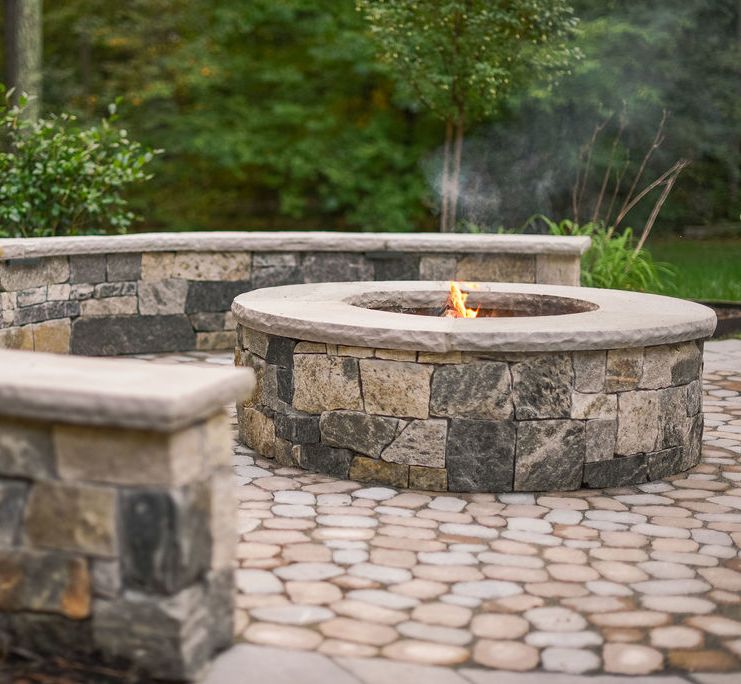
Cost
Winner: Wood
Gas features are typically more expensive than those fueled by wood because of the required equipment and utility hookup. To build a gas-burning structure, you have the added costs of the gas line, burner system, and decorative finishes (gas logs, lava rock, fire glass, etc.) These requirements can add anywhere from $3,000-$7,500+ to the cost of a fire feature. With fire pits specifically, these added costs typically result in gas features being at least twice the price of wood-burning equivalents.
And the winner is...
Personal Preference
Our contest rightfully resulted in a 4-4 tie. In the end, the best fire feature is the one that matches your lifestyle and personal preferences. Gathering around a wood-burning fire is truly a one-of-a-kind experience, but it can also be a hassle to deal with the wood and smoke. If you live a busy lifestyle, it might be a better investment to have a gas feature that is more convenient to use.
As with most choices in life, choosing between a gas or wood-burning fire feature comes with tradeoffs. When planning your outdoor living space, it's important to think through all of these tradeoffs and select the feature that best suits you. Or, if you're not good at making decisions...
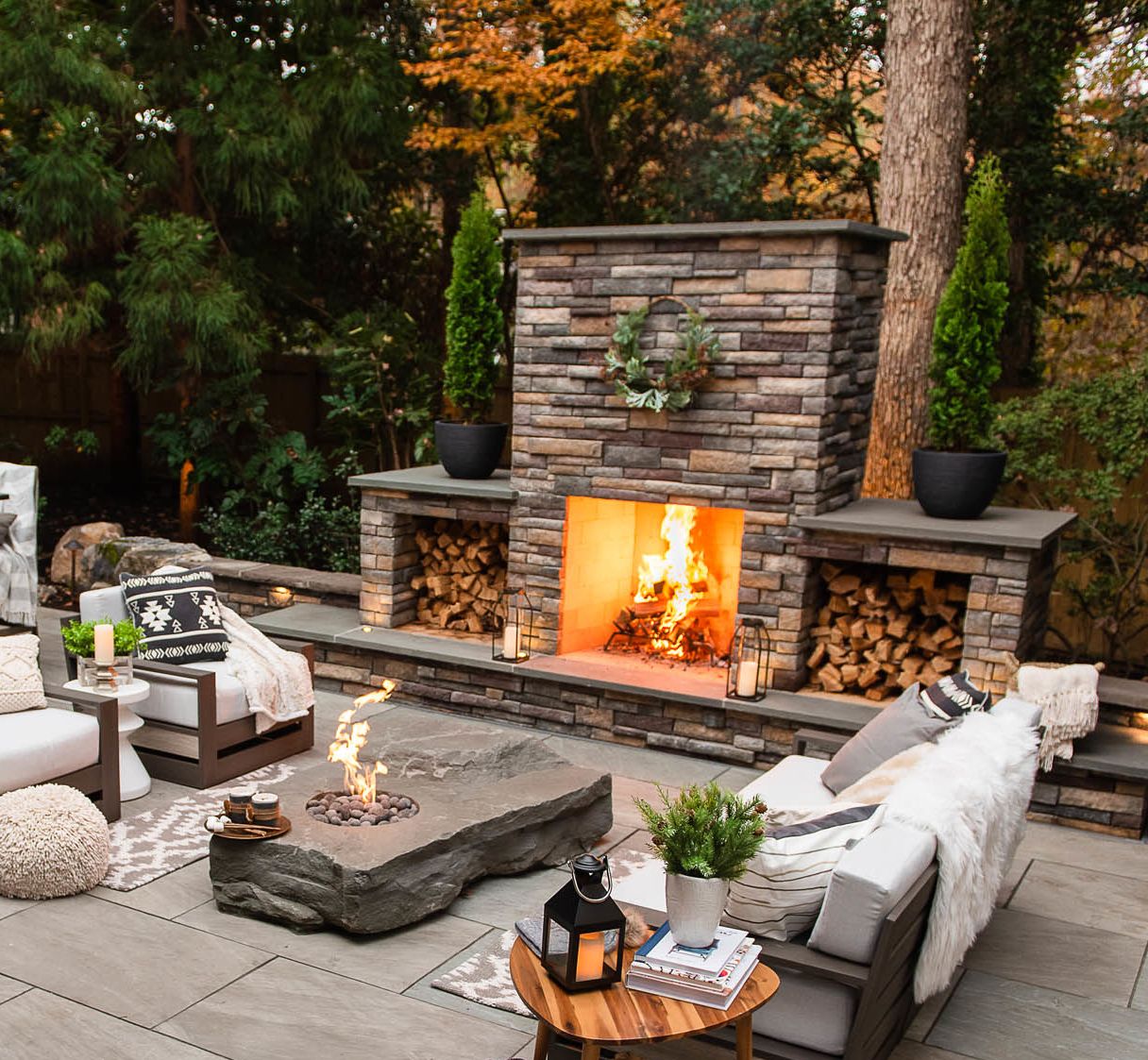
why not consider...
The best of both worlds!
Instead of either/or, why not incorporate both types of fire features?
From a value perspective, it's important to remember that the value of an outdoor living space comes from your enjoyment. Any feature that increases your use of the space also increases the value of the space.
If budget is a concern, there are cost-effective versions of both to consider.